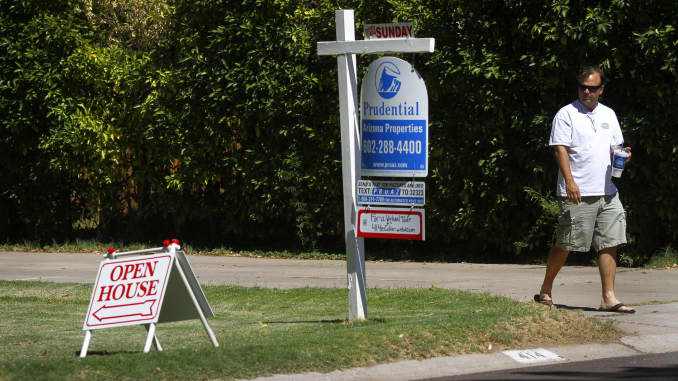Podcast: Play in new window | Download
What is an inverted yield curve and how does it impact mortgages. Below is an article from CNBC discussing just that. The Copyright of the article belongs to CNBC
The inverted yield curve is doing something weird to mortgage rates
- The gap between ARMs and fixed-rate loans is now really small because of the inverted yield curve.
- It is a rare scenario where long-term interest rates suddenly fall below short-term interest rates.
- ARM rates are kind of all over the place lender to lender because they are a very small percentage of new loan originations today, around 6% of total mortgage application volume, according to the Mortgage Bankers Association.

The inverted yield curve isn’t just spooking people over a possible recession – it’s doing weird things to mortgage rates, too.
Traditionally, adjustable-rate mortgages, or ARMs, offer lower interest rates than fixed-rate loans, because they are slightly riskier, and borrowers don’t want to pay more for more risk. ARMs can carry a fixed rate for five, seven or 10 years, and most today require some principal payment as well. No matter what the length of the fixed-rate term, they are all amortized over 30 years, so the payments will be relatively comparable to fixed-rate loans.
It is therefore very odd to suddenly see ARMs showing higher interest rates than the traditional 30-year fixed, which is what Bankrate.com is currently showing for average purchase mortgage rates. Refinance rates are still lower for ARMs.
So what’s going on? First, ARM rates are all over the place lender to lender because they are a very small percentage of new loan originations today, around 6% of total mortgage application volume, according to the Mortgage Bankers Association.
“The averages you see on the site are based on what quotes have been posted to the site, so small and inconsistent sample size on the ARMs,” said Greg McBride, chief financial analyst at Bankrate.com. “Our weekly national survey on the other hand, does show what we’d expect to see – ARM rates lower than fixed. The gap isn’t big of course, as we’ve got a flat to inverted yield curve, but the traditional relationship holds.”
And that’s precisely what is so interesting — that flat to inverted yield curve. The gap between ARMs and fixed-rate loans is now really small because of the inverted yield curve, which, without getting too technical, is a rare scenario where long-term interest rates suddenly fall below short-term interest rates. In the past, an inverted yield curve has signaled an impending recession.
“Longer-term rates (like the 30-year mortgage) are now equal to or lower than one-year rates (like the indexes used with most ARMs),” explained Guy Cecala, publisher and CEO of Inside Mortgage Finance. “Bad time to get an ARM.”
Of course we are looking at averages here, and every borrower has a different financial scenario – credit score, net worth, loan down payment, etc. – and will therefore be offered a different rate. And of course rates vary depending on the lender, especially when it comes to ARMs.
“Rates are all over the place. Some lenders want/need the variable cash flows to offset fixed-rate exposure,” said Matthew Graham, chief operating officer of Mortgage News Daily. “People want variable rates at the beginning of a Fed rate-cutting cycle, and lenders generally would prefer fixed rates of return when rates are declining.”





